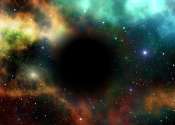Unprecedented gamma-ray burst explained by long-lived jet
Last year, Northwestern University researchers reported new observational evidence that long gamma-ray bursts (GRBs) can result from the merger of a neutron star with another compact object (either another neutron star or ...









